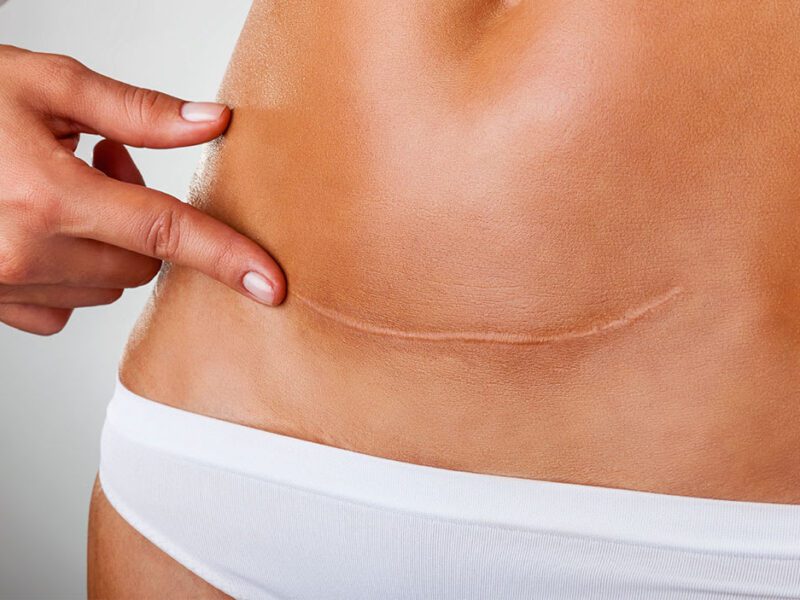
TUMMY TUCK RISK AND RECOVERY
Do you know about TUMMY TUCK RISK AND its RECOVERY? Like any surgical procedure, it comes with risks and requires careful recovery.
In this article, we will discuss tummy tucks, shedding light on the potential risks associated with the surgery and providing insights into the recovery journey.
Tummy Tuck:
A tummy tuck, medically known as abdominoplasty, is a cosmetic surgical procedure to remove excess skin and fat from the abdomen while tightening the abdominal muscles. This surgery is often sought by individuals who have experienced significant weight loss, pregnancy, or aging and are left with loose skin and weakened abdominal muscles that exercise and diet alone cannot address.
Understanding the Risks:
Like any surgery, a tummy tuck comes with inherent risks that individuals considering the procedure should be aware of. Discussing these risks thoroughly with a qualified surgeon before making any decisions is crucial. Some common risks associated with tummy tucks include:
Infection:
Infections can occur after surgery, though they are relatively rare. Following post-operative care instructions and taking prescribed antibiotics can minimize this risk.
Blood Clots:
Surgical procedures can increase the risk of blood clots forming. To mitigate this risk, patients may be advised to move around immediately after the surgery and wear compression garments.
Bleeding:
Some bleeding is normal after surgery, but excessive bleeding may occur in rare cases. Close monitoring by medical professionals is essential during the initial recovery period.
Scarring:
Tummy tuck surgery involves incisions, leading to scars. While surgeons strive to place incisions strategically to minimize visibility, scarring is an inevitable part of the process.
Anesthesia Risks:
Anesthesia is generally safe, but there are inherent risks associated with it. Your medical history will be thoroughly evaluated to minimize any potential complications.
Delayed Healing:
Factors such as smoking, age, and overall health can affect the body’s ability to heal. Following the surgeon’s advice on lifestyle changes before and after the surgery is essential.
Recovery Process:
The recovery process after a tummy tuck is crucial for achieving optimal results and minimizing complications. Here’s a breakdown of what to expect during the recovery period:
Initial Days Post-Surgery:
The first few days following the surgery are critical. Patients will experience discomfort and swelling, and they may be prescribed pain medication to manage pain. Having a designated caregiver during this time is crucial to assist with daily tasks.
Activity Restrictions:
For several weeks, patients are typically advised to avoid strenuous activities, including heavy lifting and vigorous exercise. The gradual introduction of light activities is recommended under the surgeon’s guidance.
Wearing Compression Garments:
Compression garments are often provided to minimize swelling and support the healing process. Patients may be required to wear these garments consistently for a specified duration.
Follow-up Appointments:
Regular follow-up appointments with the surgeon are essential to monitor progress and address concerns. Attending these appointments and communicating openly about the recovery experience is crucial.
Scarring Care:
Proper care of incisions is vital to minimize scarring. Following the surgeon’s instructions on cleaning and applying ointments can aid healing.
Healthy Lifestyle Choices:
Adopting a healthy lifestyle is crucial for a successful recovery. This includes maintaining a balanced diet, staying hydrated, and avoiding habits like smoking that can hinder the healing process.
Is a tummy tuck a high-risk surgery?
The risk associated with a tummy tuck, or abdominoplasty, varies from person to person and is influenced by individual health factors. While tummy tucks are considered safe, like any surgical procedure, they have inherent risks. Potential risks include infection, bleeding, blood clots, and adverse reactions to anesthesia.
It’s important to note that complications are relatively rare, and many individuals undergo tummy tucks without significant issues. The level of risk can be minimized by choosing a qualified and experienced surgeon, disclosing complete medical history, and diligently adhering to pre and post-operative instructions. A thorough consultation with a healthcare professional can help individuals understand their specific risk factors and decide whether a tummy tuck is the right choice for them.
What age is safe for a Tummy tuck?
Generally, individuals who have experienced significant weight loss during pregnancy or have loose abdominal skin due to aging may consider a tummy tuck. The key factor is the overall health of the individual rather than a specific age. Potential candidates must be in good physical health, have stable weight, and are not planning significant weight loss or future pregnancies, as these factors can affect the long-term results of the surgery. Consultation with a qualified plastic surgeon is essential to assess whether a tummy tuck is appropriate for an individual, considering their health, expectations, and specific circumstances.
Conclusion:
In short, tummy tuck can be a life-changing procedure for individuals seeking to enhance their body contour. However, it’s essential to approach it with a clear understanding of the associated risks and a commitment to the recovery process. Choosing a qualified and experienced surgeon, following post-operative instructions diligently, and prioritizing overall well-being are key factors in ensuring a successful tummy tuck experience. Patience and proper care are integral to achieving the desired results and enjoying the benefits of a transformed rejuvenated abdominal area.






